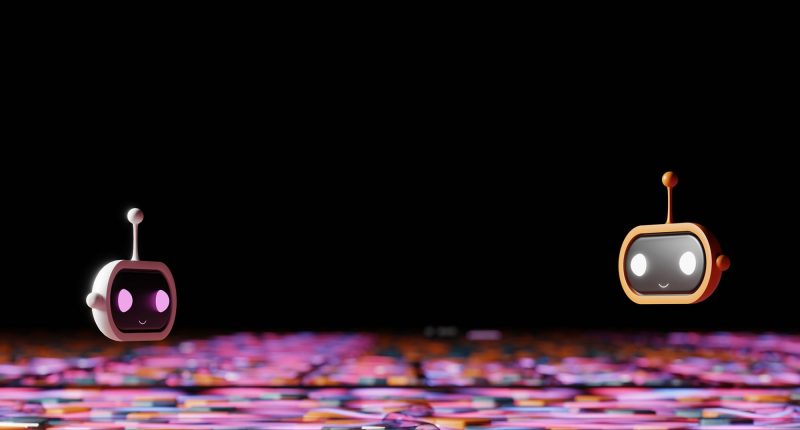
Opinions expressed by Entrepreneur contributors are their own.
Both chatbots and virtual assistants often play starring roles in the modern business environment by providing brands with extra tools and power. These AI technologies, serving as invisible agents, are crafted to help customers, streamline processes and boost overall client and user experiences.
However, when faced with selecting the most suitable AI for your customer service strategy, the question arises: Which one is the better fit? I have prepared a guide outlining the advantages and disadvantages of chatbots and virtual assistants to equip you with the insights needed to make a well-informed decision.
Related: What Is a Chatbot? Here’s Everything To Know
But before we start exploring the essence of both technologies, let’s take a look at some statistics:
- Currently, 23% of customer service companies are using AI chatbots.
- A substantial 80% of individuals have engaged with a chatbot at some point, Userlike says.
- The global chatbot market is on an upward trajectory, with a projected worth of approximately $454.8 million by 2027.
- Clutch mentions that virtual assistants are frequently used in specific industries, notably accounting (37%), IT (37%), and digital marketing (34%).
- There are varying counts of virtual assistants—either 25,000 or a staggering 30+ million worldwide. Regardless of the specific number, this underscores the growing significance of virtual assistants across diverse industries.
- 1.4 billion people are using chatbots, and the top 5 chatbot-using countries are the United States, India, Germany, the United Kingdom, and Brazil.
- 34% of online buyers said they would prefer to answer questions from AI via chatbots or virtual assistants.
The technology that previous generations envisioned in science fiction has become a reality in our present, including the once-fantastical concept of flying cars. Surprisingly, one example of advanced technology that might seem commonplace today is the humble chatbot or virtual assistant. Despite its apparent simplicity, the market for these technologies is burgeoning, drawing in and motivating more businesses to embrace these new AI instruments.
Related: AI May Not Take Your Job, But Someone Using AI Likely Will — Here’s Why.
How do they work?
Chatbots operate as rule-based AI systems, adhering to predefined scripts to respond to queries and aid in tasks. Their functionality relies on decision trees and predefined rules to determine appropriate responses.
In contrast, virtual assistants utilize more sophisticated AI technologies, incorporating natural language processing (NLP) and machine learning. This allows them to comprehend context and engage in conversations that mimic natural human interactions. The key distinction lies in the advanced capabilities of virtual assistants, enabling more nuanced and context-aware interactions compared to rule-based chatbots.
Chatbots overview
Pros:
- Chatbots are efficient at handling routine, repetitive tasks and providing quick responses. They are available 24/7, ensuring round-the-clock support.
- They are cost-effective, as they reduce the need for human agents to handle routine inquiries, saving both time and money.
- Chatbots can handle a high volume of interactions simultaneously, making them suitable for businesses with large customer bases.
- Chatbots provide consistent responses and follow predefined scripts, minimizing the risk of human errors or inconsistencies.
- Chatbots can be programmed to understand and respond in multiple languages, making them versatile for businesses with a global audience.
- Chatbots can easily scale to handle a large volume of inquiries, adapting to a business’s growing needs.
Cons:
- Chatbots may struggle with understanding complex, context-based queries and nuanced conversations.
- They might lack the personal touch that human agents can provide, potentially leading to less empathetic interactions.
- Developing and training chatbots requires time and resources, including ongoing maintenance and improvements.
Related: How Can Marketers Use ChatGPT? Here Are the Top 11 Uses.
Virtual assistants overview
Pros:
- Virtual assistants are more versatile and capable of handling a wide range of tasks, from customer support to scheduling appointments and even data analysis.
- They excel in natural language processing, making them better at understanding and responding to complex queries.
- Virtual assistants can offer more personalized interactions, creating a more engaging customer experience.
- They can maintain context throughout a conversation, offering a more seamless experience.
- Virtual assistants enable hands-free and voice-activated interactions, providing convenience and accessibility.
- They can seamlessly integrate with various devices, including smartphones, smart speakers, and smart home systems.
Cons:
- Virtual assistants often come at a higher price point due to their advanced capabilities and human-like interactions.
- They may not be as scalable as chatbots, which can simultaneously handle a higher volume of interactions.
- Building and maintaining virtual assistants can be resource-intensive and require ongoing training and updates.
- Quality virtual assistant-enabled devices can be expensive, restricting access for some users.
Let’s be straightforward – there’s no definitive choice when deciding between chatbots and virtual assistants for your customer service strategy. The selection depends on your particular needs, budget constraints, and the desired level of personalization. Chatbots shine in terms of efficiency and cost-effectiveness, while virtual assistants bring versatility and more sophisticated interactions.
The ultimate decision revolves around your business objectives and the type of customer service you aspire to provide. It’s about aligning the chosen AI technology with your unique goals and delivering an experience that attracts customers.
This article is from Entrepreneur.com









